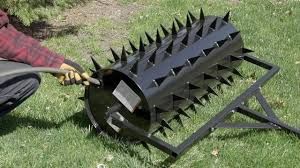

26 in the journal Proceedings of the Royal Society B. subpulchrella has not yet been identified as a pest in the western world, but it may have the potential to become one.” “We want to identify which flies are dangerous and which are not,” said Atallah. Unlike the notorious Mediterranean fruit fly or Medfly, Drosophila flies are generalists with a wide range of food sources and breeding sites, and a generation time of less than two weeks. suzukii to the point where it can penetrate fruit before it falls and starts to rot.Ĭontrolling the flies will be challenging, Kopp said. Kopp speculated that as flies compete for good food sources in which to lay their eggs, there would be an advantage in being able to colonize fresher and firmer fruit. Laying eggs inside ripening fruit is probably a recent development for Drosophila. Kopp noted that even when the Drosophila flies could penetrate fruit, they were not very good at it, taking several minutes and multiple attempts. subpulchrella, made holes in grape skins, although they laid relatively few eggs there. subpulchrella flies could penetrate the skins of cherries and raspberries and deposit eggs in them. They do have the same pattern of bristles, but they are much smaller and less visible. subpulchrella also has a large, bristly ovipositor, of slightly different shape, while the other flies have much smaller ovipositors similar to those of other Drosophila. suzukii has a large, pointed ovipositor with prominent bristles. ingestion as a result of bad practice, such as mouth pipetting.

They also offered lab-raised flies different fruits and observed whether they were able to lay eggs in them.ĭ. Table A2.2 Schedule for WHO-Euros three-day course on health-care waste management. suzukii and three other closely related species, D. suzukii was found in Southern California orchards, and since then it has spread rapidly across the country.Ītallah and the undergraduate researchers analyzed the ovipositor, or egg-laying organ of D. However, it wasn’t identified as a pest in North America until 2008, when a UC Cooperative Extension specialist sent samples of infested strawberries to Kopp’s laboratory at UC Davis, asking for help in identification. Food in jails tastes nasty, the jail in Charlotte just got a 85.50 B score during a food. suzukii apparently originated in Asia and was reported in Hawaii in the 1980s. BREAKING MECKLENBURG JAIL HAD PESTS IN KITCHEN, GETS 85.50 B SCORE DURING FOOD INSPECTION No one likes jail. “Previously, it was thought that Drosophila would just lay eggs on rotting fruit.”ĭ. suzukii was identified as a pest,” said Joel Atallah, a postdoctoral researcher at UC Davis who carried out the work with Artyom Kopp, professor of evolution and ecology, and undergraduate researchers Lisa Teixeira, Raul Salazar, George Zaragoza and Mubasher Ahmed. “It was a surprise for western researchers when D. Drosophila suzukii, also referred to as “spotted-wing Drosophila” because the male has large black blotches on his wings (as do males of several other closely related species), is able to penetrate the skins of ripening fruit and lay eggs inside. New research from the University of California, Davis, shows the similarities and crucial differences between this pest and its close relatives - and that one related fly has potential to also become a pest.ĭrosophila flies, found worldwide, lay their eggs in rotting fruit. They infested the roof trusses, it was a bad infestation.Of thousands of known species of Drosophila fruit flies, just one is known as a crop pest, depositing eggs inside ripening fruit so its maggots can feed and grow. So the chemical in pressure treated wood is something the termites don’t like. The builder had put in a pressure treated stud, (don’t know why),the termites bypassed the sole plate (it was pressure treated), ate through the paper of the drywall to get to the regular wood studs, again ate through the drywall paper to get passed the pressure treated stud and infested the rest of the wooden studs. I tore down the rest of the drywall and found all the studs were infested with subterranean termites, except for one stud in the middle of the wall. I torn open a drywalled wall and noticed some rotting wood (so I thought). It brought me back years ago when I was remodeling a bathroom for a customer. When reading the article about termite control I read about the use of pressure treated lumber for building walls in a residential area.


 0 kommentar(er)
0 kommentar(er)
